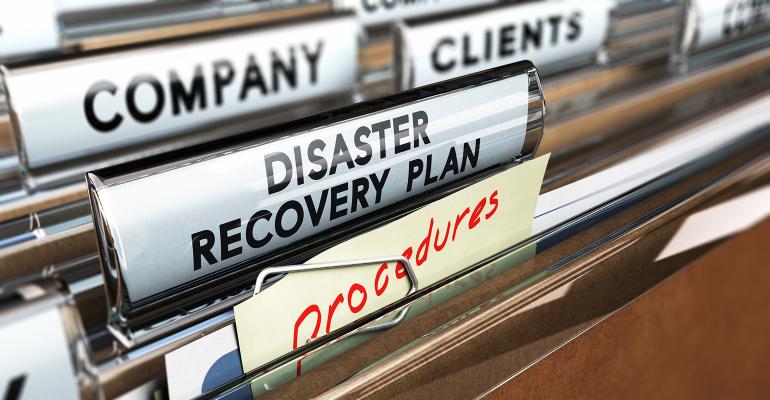If the events of the last 15 years post 9/11 have taught us anything, it's that we live in a highly uncertain world where everything from natural calamities to man-made tragedies can — and unfortunately all too frequently do — happen.
For independent financial advisors focused on the long-term health of their business and the well-being of their clients, it's more important than ever to have a carefully developed, comprehensive disaster recovery and continuity plan. Being prepared with such a plan can mark the difference between success or failure for an independent practice.
For every independent advisor, there are three top areas to look at when it comes to updating or developing a disaster recovery plan - people, preparation and proactive communications.
1. People. Now is the time to think about who should be the designated recovery plan administrator (frequently the owner of the advisory practice) and who should serve as the plan administrator's back-up (typically a partner/ lead advisor or an administrative assistant/office manager). You don't want any confusion about roles and responsibilities once a disaster has already happened - at that point, it may already be too late.
2. Preparation. Here is a checklist of "must have" preparatory activities in any disaster recovery plan:
- Maintain client contact and other important contact details (such as your broker-dealer, critical vendors and centers of influence) on a secure online customer relationship management (CRM) tool so it can be accessed anywhere and anytime.
- Regularly back up your IT systems that are not automatically saved to a secure cloud environment.
- Make sure you and your team members are well aware of your office evacuation plan.
- Analyze the option of working from home or another location away from harm's way as a contingency solution in the event of a localized disaster, and prepare for how to maintain internet and phone service for team members in the event a "remote work" scenario becoming necessary.
- Determine what technology and software you will need to enable an extended "remote work" scenario, such as web-based platforms that make it easy to work from any location.
- Keep your property and casualty insurance policy in a safe place where it is easily accessible, together with a regularly updated video of your office and its contents and regularly updated copies of your accounts receivable and list of work projects in progress for the office so nothing slips between the cracks in a crisis situation.
- If you have a solo practice, find another advisor in your area who can help your clients in the event that you are incapacitated for an extended period of time — someone you know well and trust, and who is on the same broker-dealer and custodial platform. Be sure to notify your broker-dealer of whom this person is and file any documents needed before any disaster strikes to ensure your contingency support advisor is able to seamlessly step in to support your clients on an interim basis.
3. Proactive Communications. First, be sure to reach out to your broker-dealer to inform them that you are experiencing a business disruption. Then, turn your attention to client communications. A successful disaster recovery plan should include proactive client communications through multiple vehicles. Beyond proactively calling your clients and sending out a blast email about how clients can best reach you, advisors should also be ready with an outgoing office voicemail message as well as website verbiage that provides reassurance that your business is continuing to operate, and how clients can contact you. Additionally, social media has emerged as a platform for seamless communications when many traditional communications vehicles are off-line, and advisors should not be hesitant about posting reassurances, business updates and temporary contact information on LinkedIn, Twitter and Facebook.
Finally, practice makes perfect when it comes to ensuring that your disaster recovery plan is as robust as possible. Independent advisors should set aside a date each year to perform an annual review of their plan, including running drills with your staff.
Obviously, nobody can anticipate and plan for every possible contingency in the event of a major crisis or disaster. But independent advisors who take the time to update their disaster recovery plans could find themselves in a vastly better position than their peers when the next disaster or disruption to business inevitably strikes.
Dawn Drewitz is a Senior Business Consultant at HD Vest Financial Services, an Irving, Texas based financial services firm.





